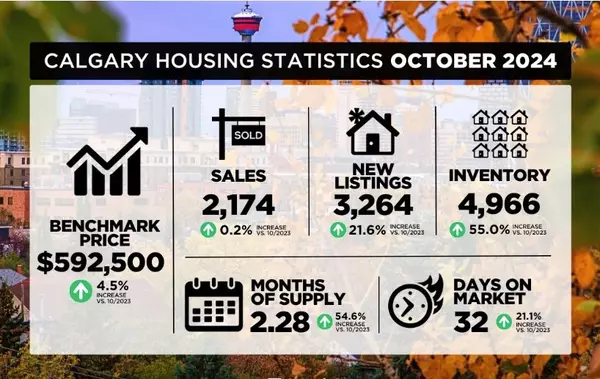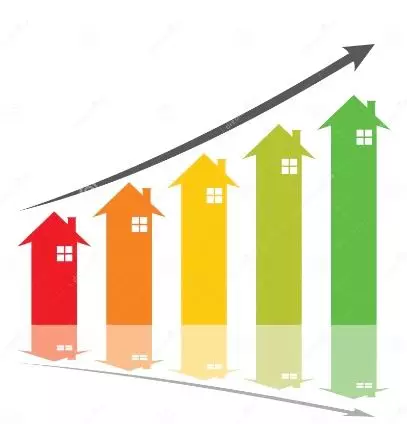Four out of Five Canadians Report that the Housing Crisis is Influencing their Life Choices

Homeownership is feeling increasingly out of reach for many Canadians, according to a recent survey from Habitat for Humanity Canada. A significant 80% of Canadians now view buying a home as a luxury, and 88% of renters feel that the dream of owning a home has turned into a distant goal. This survey, which marks the third annual affordable housing assessment, highlights the far-reaching effects of Canada’s housing crisis. An impressive 82% of Canadians expressed serious concerns about how this crisis is affecting health and well-being, while 78% recognize that homeownership plays a crucial role in the widening wealth gap in the country. The results showcase a shared worry across different age groups, particularly concerning younger Canadians who face the toughest housing challenges. Addressing the Shrinking Middle Class The survey data indicates that the shortage of affordable housing is fragmenting communities and putting the middle class at risk, with 82% of respondents expressing worry about this group’s future. More than half of Canadians are concerned about compromising on essential needs like food, education, and everyday living expenses just to make housing payments. Additionally, 41% feel overwhelmed by the stress of not being able to purchase a home. Rethinking Life Milestones for Younger Generations The ongoing housing crisis is prompting younger Canadians to reconsider their life plans. Two-thirds of Gen Z and nearly half of Millennials are contemplating delaying family plans due to the high costs of suitable housing. About 40% have noticed fewer job opportunities, having had to relocate to more affordable areas. A noteworthy 29% of Millennials and 25% of Gen Z are even considering moving abroad for more affordable housing options. Moreover, 73% of Gen Z respondents are anxious about saving enough for a down payment. Despite the growing challenges, Canadians remain optimistic about homeownership, with 87% believing it provides stability, and 81% viewing it as a pathway to a better future for their children. A Call for Action As Canada grapples with its housing crisis, the survey reveals a strong desire for political action. Seventy-five percent of Canadians feel that housing policy should go beyond political affiliations, advocating for a collaborative approach to addressing the crisis. Yet, 68% express doubts about the federal government’s ability to achieve its goal of building 3.87 million new homes by 2031. Canadians are calling for policy changes that reduce taxes and fees for first-time buyers, promote affordable homeownership, and convert unused spaces into housing.
Read MoreImproved Supply for Higher-Priced Homes Brings Balance to the Market

The housing market saw a bit of a shift in October, with sales of higher-priced homes (those over $600,000) helping to balance out slower sales at the lower end. Overall, 2,174 homes were sold in October, a nice bump from September, and 24% higher than the usual trend for the month. “Housing demand has remained steady as we head into the final quarter of the year, with October sales showing an increase from September,” said Ann-Marie Lurie, Chief Economist at CREB®. “That said, the market would likely have seen even more activity if there were more options for buyers looking for lower-priced homes. While supply has improved compared to last year’s very low levels, most of the new inventory is in the higher price ranges. This has created a more balanced market for those looking at pricier homes, but conditions are still quite competitive in the lower- to mid-priced segments.” The past six months have seen a steady rise in new listings, helping to increase the overall inventory in the city. By October, there were 4,966 homes available for sale—quite an improvement over the near-record low of 3,205 homes available last year. While inventory levels are now getting closer to historical norms, the makeup of those listings has shifted, with nearly half of all available homes now priced above $600,000. These supply adjustments are helping the market move away from the tight conditions of earlier this year, but it's still a bit of a seller's market overall. With just 2.3 months of available inventory and a 67% sales-to-new listings ratio, the market is still competitive. However, the months of supply vary quite a bit depending on the price range and type of property. For example, there’s less than two months of supply for detached homes priced under $700,000, while homes priced over $1 million have more than three months of supply. This means price pressures are different depending on what buyers are looking for. In terms of prices, the residential benchmark price in October was $592,500—up more than 4% from last year, and about 8% higher on average compared to the start of 2023. While prices dipped slightly from September due to seasonal factors, seasonally adjusted prices have remained relatively steady.
Read MoreLuxury Homebuyers Set for "Best Conditions in Years"

If you've been eyeing a luxury home in Toronto or Vancouver, the latest market conditions are some of the most favorable since 2017, according to experts at Sotheby’s International Realty Canada. In their Fall 2024 State of Luxury Report, they highlight a shift in Canada's luxury real estate market, where key cities are seeing more balanced conditions for buyers than in recent years. In both Vancouver and Toronto, the luxury condo market has become more buyer-friendly, with rising inventory outpacing demand. Even the luxury single-family home market, usually known for its fierce competition, has started to tilt in favor of buyers in these traditionally hot markets. This shift is creating opportunities for those looking to invest in high-end properties in cities that are typically known for their scarcity of listings and high prices. Vancouver: A Quiet Quarter, But Opportunities for Buyers Vancouver had a slower third quarter, with luxury sales dipping, largely due to economic and political uncertainties, high living costs, and some concerns about safety in certain neighborhoods. In fact, sales of homes priced over $4 million dropped 13% compared to last year, though ultra-luxury homes (over $10 million) held steady at four sales. September was quieter still, with a sharp 31% decline in $1 million+ sales. But there’s a silver lining for buyers—especially in the condo market. With more listings available, it’s now a buyer's market, and the summer saw a notable 19% drop in condo sales over $1 million compared to the previous year. Calgary: Luxury Market Booms Across the Rockies, Calgary’s luxury real estate market is thriving. The city continues to attract both locals and newcomers, with the population booming due to strong migration—over 89,000 people moved to Alberta in the first half of 2024 alone. This influx, coupled with Calgary's relatively affordable luxury market, has fueled a 46% year-over-year rise in luxury home sales over $1 million in the first half of 2024. Even as the market heats up, there's still room for growth, with demand continuing for single-family homes, especially those priced over $4 million. While condo sales are slower, the overall luxury market continues to build momentum. Toronto & the Greater Toronto Area: A Market in Balance In the Greater Toronto Area (GTA), increasing population levels have helped stabilize the luxury market. Sellers are more willing to price properties realistically, which has made for a more balanced dynamic between buyers and sellers. In Toronto, sales of homes priced over $1 million dropped 7% this summer, but there was a notable increase in $4 million+ homes, which rose 18% year-over-year. The luxury condo market in Toronto saw a quiet quarter, with fewer sales in the $1 million+ range, though $4 million+ and $10 million+ properties showed some improvement. Single-family homes remain in high demand, with properties in the $4 million+ range seeing the biggest gains. What’s Next? Experts predict that the luxury real estate market in Canada will remain stable for the foreseeable future. However, rising building costs, limited construction, and population growth may lead to increased competition down the road. For now, buyers are encouraged to take advantage of the favorable conditions we’re seeing today—especially if you're in the market for a top-tier home. Whether you’re eyeing a sleek condo in Vancouver, a stately mansion in Toronto, or a stylish single-family home in Calgary, the fall of 2024 offers some of the best conditions for purchasing luxury real estate in years. It’s an exciting time for buyers and investors alike.
Read More6 Things Parents Should Keep in Mind When Helping Their Child Buy a Home

If you're thinking about helping your child buy a home, it's important to approach it carefully to ensure everything goes smoothly for everyone involved. Here are six key things to consider: Communicate with the Whole Family Before you step in to help with a down payment, it’s important to talk openly with all your children (if you have more than one) and any other family members who might be impacted. This can prevent misunderstandings or hurt feelings later. Avoid Extra Costs with Mortgage Insurance If you're able to help your child reach the 20% down payment mark, you can save them from paying for mortgage default insurance. The closer their down payment is to 20%, the lower the insurance premiums will be—and often, the cost of insurance is added to the mortgage, which increases their monthly payment. Think About Taxes If you don’t have cash sitting around and need to sell an investment to help with the down payment, be mindful of any taxes you might owe. If you sell an asset that’s appreciated in value, you could face capital gains tax. This means you may end up giving less to your child than you originally intended, so it’s good to plan ahead. Keep Things Fair Helping one child with a down payment could create tension with your other kids, especially if you don’t offer them the same support. It’s important to think about whether your other children will feel left out or if they might need help as well. Clear communication and fairness are key—this is where talking openly with your children about your plans can help avoid any issues. Plan for the Unexpected Unfortunately, relationships sometimes don’t last. If your child is buying a home with a partner, it’s worth considering a legal agreement that specifies what happens to the down payment or any gifts in the event of a breakup. This can protect both your child and the money you're contributing. Small Contributions Can Add Up Remember, helping your child doesn’t always mean handing over a big lump sum. You can contribute gradually by adding to their first home savings account or tax-free savings account over time. These smaller, ongoing contributions can add up and make a big difference when the time comes to buy. By considering these points, you can help your child in a way that’s thoughtful, fair, and financially responsible for everyone involved.
Read MoreCalgary Real Estate Market Overview – October 2024

Calgary Real Estate Market Overview – October 2024 Average Home Prices Calgary's home prices have been on the rise for the past four years and are now starting to stabilize, holding steady near their peak. In October 2024, the average home price in Calgary was $620,946, up 14% compared to October 2023, but 2.2% lower than the previous month. Detached Homes: Average price was $802,152, showing a 10% increase year-over-year, but a slight 2.2% decrease from the previous month. Semi-Detached Homes: Average price hit $702,226, reflecting 14% growth from last year and a 4.4% monthly increase. Townhouses: The average price was $454,083, up 6.3% from October 2023, but 2.9% lower than in September 2024. Apartments: The average price reached $351,998, a 9.4% rise from last year and a 1.2% increase from the previous month. It's important to note that average prices can sometimes mask the full extent of price changes because when buyers face affordability challenges due to higher home prices or rising mortgage rates, they tend to shift toward more affordable property types. Luxury homes also play a role in skewing average prices upward, as fluctuations in their sales volume can cause notable shifts. In terms of property preferences, over the past few years, there’s been a shift in the market toward condos and townhouses, while demand for detached homes has decreased. Sales and Benchmark Prices The benchmark price for homes in Calgary rose 4.5% compared to last year, now sitting at $592,500. However, it dropped 0.7% compared to last month. In October 2024, 2,174 homes were sold, which is slightly up by 0.1% compared to October 2023. There were 3,264 new listings, which is a 22% increase year-over-year (YoY). With a 67% sales-to-new-listings ratio (SNLR), Calgary is currently in a seller’s market again, after a brief period of balanced conditions. The market has also seen a substantial increase in inventory, which is up 55% from last year, with 4,997 units available for sale. This brings the current inventory to 2.3 months of sales, up slightly from the previous months. Property-Specific Details: Detached Homes: The benchmark price for a detached home in Calgary was $753,900, reflecting an 8.1% increase YoY, though it dropped slightly by 0.4% from last month. Detached home sales decreased 10% from last year, with 1,071 homes sold. Semi-Detached Homes: The benchmark price grew by 8% YoY to $677,000, with a 0.2% drop from August. Sales of semi-detached homes increased 6.2% YoY to 190 units sold. Townhouses: Benchmark prices for townhouses rose 8.1% from last year but fell 0.6% month-over-month to $456,600. Row house sales dropped 6.1% YoY, with 353 units sold. Apartments: The benchmark price for apartments increased by 11.4% YoY to $341,700 but dropped 1% from September. Apartment sales decreased by 13% YoY, with 560 units sold. Median Prices Looking at median prices, which offer a different view of market trends: The median home price in Calgary rose 16% YoY to $575,000, with a 1.8% increase from September. Detached homes had a median price of $699,800, reflecting a 7.7% annual increase. Semi-detached homes reached a median of $623,875, up 16% compared to last year. Row houses had a median price of $437,500 (+4.2% YoY), while apartments reached a median of $315,000, marking a 7.7% increase YoY. Market Context Compared to other major cities like Toronto and Vancouver, Calgary remains much more affordable. However, it’s slightly less affordable than Montreal. Over the past four years, Calgary home prices have jumped 41%, which has reduced affordability for many buyers and renters. While this may slow economic growth and productivity in the region, there are plans in the works to relax zoning restrictions and allow for more housing development, which could help maintain Calgary’s appeal for those looking to live and work here. Supply and Demand Calgary’s population has been growing steadily, with projections indicating an increase of around 55,500 people annually. This growth requires roughly 20,600 new homes each year, but new construction has been averaging only 15,500 homes per year. This gap between demand and supply is contributing to the pressure on home prices. Macro-Economic Trends Looking at long-term trends, Calgary's real estate market has seen a 33% increase in home prices over the last decade, outpacing inflation (28% rise in the Consumer Price Index). In contrast, home prices in cities like Toronto and Montreal have skyrocketed by 100% and 97%, respectively, over the same period. Despite the rise, Calgary’s housing market has remained relatively affordable, and with moderate growth of 2.9% per year over the past decade, it appears that there are fewer risks of a sudden downturn. With its strong economy, high incomes, and abundance of natural resources, Calgary remains an attractive destination for both Canadians and newcomers from around the world.
Read MoreNew Home Sales in Toronto Stay Low in September, But There's Hope for Buyers!

New Home Sales in Toronto Stay Low in September, But There's Hope for Buyers! New home sales in the Greater Toronto Area saw a slowdown in September, but a recent report hint that now could be a great time for buyers! The Building Industry and Land Development Association (BILD) shared its latest findings on Monday, revealing that there were 591 new home sales last month—a significant 69% drop compared to last year. Breaking it down, 344 of these sales were for single-family homes, like detached, linked, semi-detached houses, and townhouses, which is a 41% decrease from September 2023. Condominiums also faced a tough month, with only 247 units sold down 81% from the previous year. Despite this sluggish performance, Edward Jegg, research manager with Altus Group (BILD’s new home market insights provider), remains optimistic. He noted, “Even with three consecutive rate cuts from the Bank of Canada, GTA new home sales have struggled this September.” Since the central bank began lowering its policy interest rate in June, from 5% to 3.75%, the market is showing signs of readiness for buyers. “We now have a market with plenty of inventory, dropping prices, and an additional 50 basis point cut. It’s time for buyers to make their move!” Jegg encouraged. The report also highlighted that the remaining inventory of new homes has slightly increased, reaching nearly 22,000 units—this includes about 17,500 condos and close to 4,500 single-family homes. While the inventory level remains high at 13.8 months based on average sales, it reflects a trend seen since autumn 2023. However, the longer sales stay low, the greater the potential impact on future housing starts in the GTA, which could lead to inventory shortages and rising prices down the line. The report indicates that today’s market conditions might set the stage for a future supply crunch. Lastly, despite the slower sales, benchmark prices for new homes saw a slight dip last month. The average price for condos is now $1.025 million (down 1% year-over-year), while single-family homes have decreased to $1.565 million (down 0.1%). So, while the market is a bit slow, there are definitely opportunities for buyers to explore!
Read MoreBMO Highlights Potential Correction in Canadian Real Estate Prices Due to Immigration Changes

BMO Highlights Potential Correction in Canadian Real Estate Prices Due to Immigration Changes This week, BMO Capital Markets shared important insights on Canadian real estate, noting that Canada is taking significant steps to improve housing affordability by reducing its population growth. The bank has previously highlighted that plans to triple new home construction to boost affordability may not have been entirely realistic. With the acknowledgment of these challenges, BMO predicts a positive shift toward more affordable housing as construction efforts align with a smaller population. Changes to Immigration Could Impact Real Estate Prices Canada is taking a breather on immigration after realizing that previous strategies may not have worked as hoped. Following this year’s reduction in the number of temporary residents, including foreign students, the country is now focusing on stabilizing housing markets through a gradual population decrease. For the next couple of years, expect a dip in population growth as part of an effort to bring balance to housing after ambitious homebuilding promises fell short. Robert Kavcic, a senior economist at BMO, shared, “We've voiced our concerns for years about the narrative that Canada needs to dramatically ramp up housing construction. While it wasn’t entirely feasible, the real issue lay in the demand curve going out of control.” Kavcic emphasizes that for a long time, there weren't significant supply issues; instead, demand was influenced by policies intended to boost home prices, often causing confusion about affordability. As changes to immigration targets were announced recently, he explains that this represents a second factor affecting demand, following the Bank of Canada’s rate hikes that addressed speculative buying. With expected population growth slowing from over 3% to nearly zero, the impact on housing costs, particularly rents, is anticipated to be swift. Understanding the Demand-Focused Approach to Housing Issues Policymakers are recognizing that the challenges in the housing market are more about demand than supply. Initially, they pointed to regulatory obstacles as the cause of rising home prices. However, lifting these regulations led to higher land values but fewer new builds. The government invested heavily through loans and stimulus to encourage developers, but results were minimal.
Read MoreInterest Rate Cut Could Affect Edmonton Real Estate in Different Ways

Exciting news for Edmonton real estate! As the Bank of Canada has cut its key interest rate for the fourth time this year, real estate broker-owner shares some friendly advice: "If you’re thinking about jumping into the market, it might be a good idea to find a property now. Prices could rise next year!" This recent cut, which lowered the rate to 3.75 percent— the biggest drop of the year—could bring a flurry of activity to an already vibrant Edmonton housing market. While this is great for potential buyers, it also means the commercial real estate sector might see a boost as well. According to the Bank of Canada, this decision aims to support economic growth and keep inflation in check. They’ve hinted at the possibility of more cuts in the future, depending on how the economy performs. However, it’s worth noting that inventory levels are quite low, with only three months of supply available in Edmonton. This tight market means sellers have an advantage, but the new interest rate could either spark a buying frenzy or lead some buyers to hold off and wait for even better rates. Overall, while the lower interest rates give buyers more spending power, the limited housing supply might counteract some of those benefits, pushing prices up. With just one more interest rate announcement scheduled for December 11, 2024, it’s definitely an exciting time to keep an eye on the Edmonton real estate market!
Read MoreExciting News: Alberta Housing Starts on the Rise!

Exciting News: Alberta Housing Starts on the Rise! This year is already shaping up to be a record-breaker for housing starts in Edmonton and throughout Alberta, reaching levels not seen since 2007! The City of Edmonton proudly announced it has exceeded its 2023 goal with a remarkable 10,004 housing starts from January to September, surpassing last year's total of 9,665. This great news comes thanks to some smart changes to regulatory and planning processes, including a significant reduction in red tape, which has allowed for quicker approvals and more homes being built. While Edmonton's housing starts have jumped over 45% from last year, Calgary is currently leading the province with over 17,000 starts—a 23% increase from last year. Alberta Community Services Minister Jason Nixon commented, “Our efforts are truly making a difference in increasing housing supply and giving Albertans the homes they need!” Overall, the province has seen over 33,500 housing starts in the first nine months of the year, compared to nearly 25,000 last year. According to an ATB report, housing starts are at their highest since 2007! The report noted that Alberta's housing starts are up 44% this year, while the rest of Canada is seeing a slight decline. This positive trend is also bringing good news for renters, as nearly 10,000 apartment units were started in the first half of 2024, breaking a record from 1977. Christel Kjenner, director of the Housing Action Team in Edmonton, explained that it's important to build a variety of housing options. “To meet the growing demand, we need not just more homes, but different types as well,” she said. “It’s exciting to see an increase in secondary suites and backyard homes, which now represent 24% of residential building permits issued this year!”
Read MoreConsidering Buying or Selling a Home in Canada? Let’s Explore the Market Together!

If you’re thinking about stepping into the Canadian real estate market, understanding the current forecast is key. It might seem complex, but I’m here to break it down for you in a clear and engaging way. Let’s dive in! What’s Happening in the Canadian Housing Market? The Canadian real estate market has been quite a ride recently! With interest rates going up, things have cooled off a bit. However, there’s good news on the horizon. The Canadian Real Estate Association (CREA) has updated its forecast, and it offers some intriguing insights. While we may not be experiencing a market boom, we’re also not in a downward spiral. It’s a more nuanced situation than you might read in the headlines, and much of it hinges on interest rate developments. One major factor at play is the Bank of Canada's interest rate policy. Their decisions directly affect mortgage rates, which in turn influence affordability and buyer interest. The expectation of rate cuts is critical: if rates drop sooner than expected, we could see a quicker rebound in market activity. On the flip side, if cuts are slower, we might be in for a longer stabilization period. This is something to keep an eye on! What to Expect in the Canadian Real Estate Market for 2024 and 2025 CREA's Updated Forecast: A Closer Look CREA recently revised its forecasts for 2024 and 2025, revealing a market that’s looking more stable than explosive. This is quite different from earlier predictions, which anticipated a surge in activity once rates began to fall. The updated outlook suggests a slower recovery than initially thought, with a more noticeable rebound expected in the second quarter of 2025. Many potential buyers have decided to hold off until interest rates improve further. Regional Breakdown: A Tale of Two Markets The national statistics are just the beginning; significant regional differences are also on the horizon, showcasing the diversity of the Canadian real estate landscape. Stronger Markets: Alberta: This province is on a growth trajectory, fueled by a strong economy and a thriving energy sector. Forecasts predict an 8.4% increase in sales for 2024 and a 6.8% rise in average prices for 2025, reflecting Alberta's ongoing economic strength. Quebec: Quebec is projected to see impressive sales growth of 15.7% in 2024, followed by another 4.7% in 2025, indicating that its real estate market has solid momentum. Markets with Slower Growth: British Columbia: Even though British Columbia generally has a strong economy, its real estate market is expected to grow at a slower pace due to higher interest rates impacting affordability. Ontario: This large province is also looking at modest growth, especially in the Greater Toronto Area, as it grapples with the ongoing effects of higher interest rates. Other provinces like Saskatchewan, Manitoba, New Brunswick, Nova Scotia, Prince Edward Island, and Newfoundland and Labrador are expected to see moderate growth in sales and prices, but not quite at the pace of the stronger markets. Factors Beyond CREA’s Forecast to Keep in Mind While CREA's forecast provides valuable insights, it’s important to remember that these are just projections. Several factors can influence how the market performs: Interest Rate Changes: The Bank of Canada’s decisions are crucial, and unexpected changes could significantly sway buyer behavior and market activity. Economic Conditions: A broader economic downturn might dampen demand, whereas strong economic growth could boost it. Government Policies: Any changes to mortgage rules, taxes, or housing policies could reshape the market’s path. Supply and Demand: Local imbalances between the supply of homes and buyer demand will continue to impact prices in various areas.
Read MoreFactors Influencing Alberta Home Prices

Core Demand: What’s Driving the Market? Population Growth: This is all about how many people are moving to the area. On average, about 2.5 people make up a household. Home Price Growth: This refers to the changing market values of homes that people want to buy. Savings and Equity: This includes any disposable income you’ve managed to save after taxes, plus the equity you have in your current home. Financing: This looks at how much mortgage you can get based on your income (what you can afford in payments) and interest rates (how much those payments will be). Job availability is also key, as having a job is essential for qualifying for a mortgage. Population Growth in Alberta Alberta’s population usually keeps growing, but the rate of that growth is what really matters. If growth slows down compared to previous years, there’s less pressure for prices to rise. After a bit of a slowdown in 2020, Alberta is bouncing back nicely, making up for the pandemic pause. While 2023’s growth numbers might seem high, they fit well within the long-term trends, especially when considering the low growth during COVID. Plus, Canada has set ambitious immigration targets, and it looks like those were met in 2022. However, it’s interesting to note that full-time job growth hasn't kept pace with population growth. Changes in Home Prices When prices rise, it can make homes less affordable, which in turn limits the number of buyers in the market. This can create a bit of a catch-22: higher prices can actually put downward pressure on them, especially for first-time buyers looking for entry-level options. A general guideline is that homeownership costs become a stretch when they exceed 40% of household income. According to RBC Royal Bank, in Calgary, these costs were about 39% of the median income, while in Edmonton, they were 29%. Overall, Alberta's home prices seem to be aligned with long-term economic trends. Savings and Equity Insights Equity: Existing homeowners have seen their property values rise, giving them more equity to work with when purchasing a new home. Although there’s been a recent softening in the market, it hasn’t significantly affected most homeowners’ equity. Condo-to-House Price Gap: A large gap between condo and house prices means that condo owners wanting to upgrade to a detached home need to save more and secure larger mortgages. A smaller price gap would make it easier for those condo owners to make the leap. Lately, this gap has widened quite a bit. Savings: With inflation outpacing income growth, everyday items are costing more, but paychecks aren’t increasing much. If this trend continues, many Canadians might deplete their savings or even start accumulating debt to cover daily expenses. Financing and Mortgage Rates Mortgage Rates: Since 2020, mortgage rates have been climbing. While they’re currently in the mid-range compared to the last 30 years, they’re the highest we’ve seen since before the 2007 financial crisis. Rates often move in sync with bond rates, influencing overall affordability in the housing market.
Read MoreEdmonton a seller's market with a lot of new construction in the works, realtor says

"But at the end of the day, values are going up faster than the interest rate savings. For Edmonton's market, our advice is don't wait until rates drop to enter the market" The Bank of Canada has cut its interest rate to 4.25 per cent and experts are saying Edmonton is currently a seller's market. Photo by Peter J. Thompson /Postmedia The Bank of Canada’s latest cut to its key interest rate — the agency’s third consecutive cut since June to 4.25 per cent — has raised questions about how the move might affect Edmonton’s housing market. John Carter, a broker and owner at Re/Max River City, sat down with Postmedia to discuss what buyers and sellers should expect and which areas of the market are doing well. The interview has been edited for length and clarity. What does the rate cut mean for people in Edmonton looking to buy or sell? For the most part, it’s adding consumer confidence. People feel that rates are moving in the right direction now and they are more optimistic. Our values are going up largely driven by the amount of Ontarians moving here and investing in real estate in Edmonton. There’s more people and more demand than there is supply of properties, so we’re building a lot of new homes and that’s going to start to help meet the supply. But at the end of the day, values are going up faster than the interest rate savings. For Edmonton’s market, our advice is don’t wait until rates drop to enter the market. Each little rate drop that we’re seeing starts to have certain buyers come off the shelf that are now able to enter the market. But sometimes they’re then having to lower their expectations about what they can buy because the values have gone up, but it adds more demand. Your report said Edmonton is currently a seller’s market. What does that mean for sellers right now? The biggest challenge for most sellers is if they still need a place to live. There’s a lot of inventory that we call “shadow inventory” that’s sort of locked up right now because the owner of the property wants to sell but it’s not serving their needs anymore. They can’t sell it yet because they need to buy something and they’re waiting for the property to buy before they’ll sell. Homes and the city skyline is seen from the Griesbach neighbourhood in Edmonton on April 2, 2019. Postmedia, file Photo by Ian Kucerak /Postmedia So it’s really important to use a realtor to help navigate that. What we call buying backwards, if you get your qualification in order with the mortgage person, to know if you’re able to buy the new place without having to sell the old place or structuring the deal accordingly. Low-end condos are selling very well. Stuff that people have been sitting on and unable to sell in some cases for more than 10 years, they sell really fast and a lot of investors are buying them, or people are buying them as a starter property. The amount of new construction that’s happening because the City of Edmonton did a big bylaw change, that’s quite progressive. There’s a ton of new product under construction and that’s what buyers want. Once the properties are built, then they’re selling their older property and they’re moving up and you see a lot of it is couples and families and lifestyles have changed. It’s still that post-pandemic (trend), they want a home gym, a home office, green space and a yard, close to good schools and all those kinds of amenities. The perimeters of Edmonton are where there’s the most demand right now because of Anthony Henday Drive. We’re actually seeing the most sales volume in the $400,000 to $500,000 price point, even $350,000 to $500,000, because you can get some attached-style new construction product or a duplex townhouse style for brand new. But in those periphery areas in the $500,000 to $800,000 range, what we’re seeing is that price point bumps up a little bit as rates go down. All of a sudden you’ll start seeing the average go up of what people can afford and what they’re buying. What is inventory like in Edmonton for those searching for a home? Is it challenging? It’s very segmented by age, product type and price. If you’re buying in the $600,000 to $1 million range and you want 10 years older or more, it’s a buyer’s market. Anything under a half million dollars is competitive, usually multiple offers and that’s where usually the Ontario buyer is willing to pay more and so local buyers do lose. When there’s an Ontario buyer, 90 per cent of the time they win in a multiple-offer (scenario). The other side of the market is our luxury market — the vast majority of properties selling are between $1 million and $2 million. You get a lot of houses in a great location with a large yard for brand new.
Read MoreExperts expect a balanced real estate market this fall

A for sale sign outside a residential property on Bagot Street in March 2024.Santana Bellantoni/GuelphToday file photo Things are looking up for the real estate market in Guelph, according to local experts. Or, at least balanced. The Guelph & District Association of Realtors released its fall 2024 real estate market outlook, and is projecting a steady and improving market, fuelled in particular by recent interest rate cuts by the Bank of Canada and unemployment rates well below the national average. In a press release, GDAR said the Bank of Canada lowered the benchmark interest rate to 4.25 per cent, which is “expected to stimulate local housing activity as borrowing costs decrease.” GDAR President Dillon Fraser believes the recent rate cut is likely to bring more buyers into the market, especially first-time homebuyers who couldn’t afford to before. "With lower mortgage rates, we anticipate more demand for properties in Guelph and surrounding areas, contributing to a more active fall market,” he said. There were a total of 342 homes sold through the MLS System of GDAR in July 2024, up by nearly nine per cent from July 2023. Price-wise though, don’t expect too much change. The average price of homes sold throughout July was $892,453, with a gain of 0.6 per cent from July 2023. “We don’t have a crystal ball, of course, but we’re sitting on more inventory than we were back in COVID times. As long as we can continue to maintain that level of inventory (or better yet, increase it), we’ll be able to keep prices in check. But for the time being, it doesn’t seem as though things are going off the rails in the short-term,” Fraser said. In the meantime, he said we’re in “a sweet spot for buyers and sellers.” “Houses are on the market a little bit longer, and so it’s not as rushed for a buyer as it was (during the pandemic). At the same time, houses are still selling. People have more options.” In other words, it’s a balanced market right now, which is good especially for those who are both buying and selling. But there is still a risk of volatility if the amount of inventory doesn’t keep up with demand. “That’s why we’re continuing to try to encourage the city to make policy decisions that will foster more growth in terms of homes for people,” he said. “COVID really highlighted the fact that we haven’t been building to the degree that we were back 30 years ago.” However, there is significantly more inventory right now when it comes to apartment-style condos compared to detached homes, because condos have been selling much slower post-pandemic. This can be beneficial for first-time home buyers, he said, since it gives them more options.
Read MoreRate, price decreases boost purchasing power across Canada

A Calgary buyer would require an income of $118,980 to qualify for a mortgage for the average priced home, or $1,690 less than a year ago. Falling resale home prices and lower interest rates on mortgages have boosted housing affordability across major Canadian cities, including Calgary, a new report has found. Ratehub.ca released a study measuring the amount of household annual income needed to qualify for a 20 per cent down payment on a five-year, fixed-rate mortgage for the average-priced home in 14 Canadian markets. All cities saw decreases in income required to qualify this past July versus July last year, largely due to a drop in mortgage costs. The average five-year, fixed mortgage fell to 5.29 per cent in July versus 5.47 per cent a year ago. The report, however, calculated the income required to qualify under the federal stress test rules, requiring borrowers to be able to afford the interest rate offered plus two percentage points. In July, that threshold was 7.29 per cent versus 7.47 per cent in July 2023. At the same time, average home prices fell in nine of 14 markets. Calgary saw its average price fall $400 year over year to $588,600. With the price drop and lower borrowing costs, a Calgary buyer would require an income of $118,980 to qualify for a mortgage for the average priced home, or $1,690 less than a year ago. The largest drop in income requirements was in Toronto where a buyer needed $208,950 to qualify for a mortgage for the average priced home at $1,097,300. That’s an income requirement decrease of $5,410 from July 2023. Even in cities where prices increased, the lower cost of borrowing made homes more affordable, the report found. That includes St. John’s, NL, where the average price increased by $4,500 to $349,700. There, a buyer would require an income of $76,720 to qualify for a mortgage, a decrease of $160 from the same month last year.
Read MoreKelowna experiencing buyer’s market as real estate listings increase
There are plenty of ‘for sale’ signs in front of Kelowna homes these days. “We have accumulated a lot of inventory over the last few months,” said Kelowna realtor Jaime Briggs. “Right now, we are sitting at about nine months of listing inventory.” Briggs said there are several factors, including slower than normal sales this past spring and a lackluster tourism season this summer. “The summer has really hurt us,” Briggs said. “We’ve seen a lack of tourism and a lack of people coming to the Okanagan and typically we get people coming here. They fall in love with the area, they want to buy here.” According to a newly released report by Re/Max Canada, the number of listings in the area are up by 17.8 per cent from this time last year while residential sales have dropped by 12 per cent. Prices have budged but only slightly with the average sale price across all property types down by 2.4 per cent. “There’s not a lot of activity happening,” said Brendon Ogmundson, chief economist for the B.C. Real Estate Association. “We’d much prefer for a balanced market with lots of listings, lots of sales and instead we’re in this market that’s trapped in this low activity state.” According to Ogmundson, Kelowna has experienced lower housing sales due to a sluggish economy. “The one thing that is true about Kelowna right now is that the economy there has been struggling for the last six to eight months. Tourism has been really affected, partly by short-term regulations, probably by other factors and so we have seen job losses in typical tourism sectors.” Ogmundson said. “Sales there have been pretty weak but it looked like they bottomed in the early spring starting to come up in the last few months.” With a robust supply of listings, Re/Max Canada stated Kelowna is now a buyer’s market giving those looking to purchase more options. “Interestingly, we are in a buyer’s market, and I say generally speaking,” Briggs said. “In some categories, though, the market is still tight, so in some of the entry-level product, we are seeing multiple offers still in that, but in the million-plus and higher luxury market, we have a lot of inventory out there.” According to Re/Max Canada, the new restrictions on short-term rentals that went into effect in May are contributing to the buyer’s market with many properties, especially condos, once used as vacation rentals now listed for sale, flooding the market. “People that owned those products and that they were renting are having to sell because they don’t want to go into long-term rental conditions,” Briggs said. As to whether the Bank of Canada’s latest interest rate cut by a quarter percentage point is enough for more buyers to step up and scoop up all those properties, Re/Max doesn’t think so and neither does Briggs. “We were hoping it would be more of a drop, but I don’t think it’s going to spur people, you know, and get them jumping up and down, off the fence,” Briggs said.
Read MoreCanadian house prices could rise by up to 6% in steady fall market

There could be a boost for owners of residential real estate assets in the months ahead as lower interest rates adds fuel to the Canadian housing market. RE/MAX Canada’s 2024 Fall Housing Market Outlook is out today (September 3) and calls for average house prices to rise between one and six percent across 76% of its broker regions surveyed, as rate cuts lead to a steady market. However, there are some notable areas where prices are expected to be flat or even decline, such as Toronto, Hamilton, Burlington, Kitchener-Waterloo, Charlottetown, North Bay and London. "The fall market is usually a good early indicator for activity as we look ahead to early 2025, and we're headed toward more healthy territory. With interest rates starting to ease, buyers are beginning to come off the sidelines," says Christopher Alexander, President, RE/MAX Canada. "That's not to say the fall market will be in full swing according to historic standards. Consumers will drive that trend, so we'll need to see a bigger move by the Bank of Canada for that to happen." Leger research for RE/MAX Canada found that 16% of respondents said they will feel confident participating in the housing market if rates have fallen by 100 basis points by the end of the year with 25% indicating that they are actively saving to buy a home in the near future, although this is well below those who are prioritizing day-to-day expenses such as utilities and food (58%), and travel (45%). Also, 14% of poll participants said they are soon to renew their mortgage and if rates haven’t dropped enough they may have to sell their home. And despite the overall outlook being cautiously optimistic – which has also been reflected by the Canadian Real Estate Association - affordability remains a significant challenge for individuals and the Canadian housing market. "Despite some consumer confidence starting to return to the market this season, the reality is Canadians are still grappling with some serious housing affordability challenges rooted in lack of supply. Yes, borrowing is becoming less expensive, but this won't make housing affordable in the long run," said Alexander. "Markets ebb and flow, and as buyers re-enter the market and absorb inventory, we'll see more upward pressure on price.
Read MoreBank of Canada Rate Cut: Impact on the Fall Housing Market

The Bank of Canada dropped its overnight rate again today, bringing it 75 basis points lower than it was 12 weeks ago. Depending on when you read this, the Bank’s most recent rate cut may already be reflected in lenders’ variable mortgage rates. At a time when Canadians are carrying over $2 trillion in debt and falling further behind in repaying it, any reduction in interest rates is good for consumers. Will a modest dip in variable rates be enough to wake the housing market now that the fall selling season is here? Not necessarily. But we may be getting closer. Variables still make for a rough stress test A third consecutive rate cut means variable mortgage rates look a lot more appealing than they did three months ago. A third consecutive rate cut means variable mortgage rates look a lot more appealing than they did three months ago. If this was a teen movie, variable rates may have just taken off their glasses, undone their ponytail and made the entire school do a double take. Variable rates are still prohibitively high, though. Once lenders lower their prime rates, the lowest variable rates at Canada’s biggest banks will still be around 5.9%, though a broker might be able to find you a rate closer to 5.25%. Either option means passing a challenging stress test. A rate offer of 5.25% would require passing a stress test at 7.25% A qualifying rate that high could significantly restrict the amount a borrower is approved for. Fixed mortgage rates remain much lower than variables. Some lenders and brokerages are offering three- and five-year fixed rates for below 4.5%, which means lower mortgage payments and an easier road to qualification. But even these sub-5% rates haven’t been low enough to get the market moving. In July, home sales were down compared to June, and just 4.8% higher than July 2023, according to the Canadian Real Estate Association. Slightly lower variable rates weren’t the antidote then, and they probably aren’t now. Until variable rates fall by at least another 1%, they won’t provide a more affordable option than what’s already available. The Bank of Canada would have to be uncharacteristically aggressive to make that happen this year. Other qualification roadblocks A BMO survey conducted this spring found that 72% of prospective home buyers are waiting for rates to fall before entering the market. That’s a valid strategy, but lower rates can’t always make up for other shortfalls where mortgage financing is concerned. Down payments One of those shortfalls could be found in Canadians’ down payment savings. According to July’s MNP Consumer Debt Index, 46% of Canadians are $200 or less away from failing to meet all their financial obligations. In July, the average minimum down payment required in Canada was $41,732. After years of paying elevated prices and interest rates, many Canadians simply don’t have access to down payments large enough to qualify for the mortgages they need. (Let’s not forget the thousands of dollars in closing costs they’ll have to come up with, too.) Debt service ratios If home buyers have leaned on credit to survive the last few years, their debt service ratios might discourage lenders from playing ball. In the second quarter of 2024 each of the following increased year-over-year, according to TransUnion: Average auto loan balances. Average credit card balances. Average installment loan balances. Number of Canadians making minimum payments on their credit cards. That amounts to a whole lot of pressure on a person’s gross debt service ratio, which can’t exceed 39% of gross monthly household income. If it does, that borrower won’t be able to qualify for a loan at a major bank. And if they turn to an alternative lender, they may need to provide a 20% down payment. Once rates fall further and these debt balances are easier for Canadians to pay down, the debt service piece of the puzzle will improve and qualifying will become easier. Not yet, though. Then again… There are a few possible scenarios that could jolt the market back to life this fall. They’re not necessarily likely, but because Canadian home buyers can be…let’s say “unpredictable,” they shouldn’t be ruled out: FOMO might kick in. If buyers, particularly those who missed out on the pandemic feeding frenzy, get the impression that the market’s warming and prices are firming up, they may accept paying today’s rates instead of tomorrow’s prices in a bid to beat the rush. The BoC may turn on the jets. There’s some speculation that the Bank of Canada might drop a 50-basis point cut in the near future. The easier qualification threshold and implied future savings of such a cut would generate a small stampede to lenders’ doors. Fixed rates could dip below 4%. As much as Canadians might want variables to fall so they can sign on to an affordable, flexible option, it’s hard to imagine a scenario where they turn up their noses to a fixed rate that starts with a three. That might not be realistic this year, but lenders are highly competitive right now.
Read MoreCanadians outspend other foreign real estate buyers in the US

Canadian investors remain active in US market, despite slowdown in foreign activity Despite a sharp slowdown in foreign real estate activity in the US, Canadians are buying more residential properties than any other international group, a new report from RBC revealed. Foreign purchases of US properties fell dramatically from April 2023 to March 2024, the banking giant said, based on data from the National Association of Realtors (NAR). Transactions involving international buyers totalled $42 billion, down 21% from the previous year. The number of properties bought by foreign buyers also dropped by 37%, with just 54,000 sales in the same period. Even as other foreign buyers pulled back, Canadian buyers increased their market share to 13% of all foreign transactions, making them the largest group of foreign buyers, ahead of Chinese, Indian, and Mexican buyers (each accounted for 11% of foreign purchases). “While the US real estate market has been dealing with some challenging economic factors – inflation, higher mortgage rates, climbing prices and limited inventory – Canadians can still find deals south of the border,” the report read. “And they have been buying properties, as demonstrated by Canada’s place at the top of the foreign buyers’ list.” Canadians find value in US market While high inflation, rising mortgage rates, and a strong US dollar have reduced the purchasing power of many international buyers, Canadians have been relatively less affected. The Canadian dollar only depreciated by 3.6% over the past year, compared to a much steeper decline in the Chinese yuan, which fell by 9.4%. However, Chinese buyers still led in total dollar value, spending $7.5 billion on US real estate compared to Canada's $5.9 billion in purchases. The relatively higher home prices in Canada’s largest cities, such as Toronto and Vancouver, have also helped Canadians absorb US real estate prices that may seem more affordable in comparison. For example, the price per square meter in Toronto in June ($12,504) was more than double that of Los Angeles ($4,760) or Honolulu ($6,280). Most in demand properties Nearly half (49%) of Canadian buyers purchased US homes for vacation purposes, with the majority opting for single-family homes. Condos and townhomes represented 8% and 18% of sales, respectively. Popular destinations for Canadian buyers included Florida, Arizona, and Hawaii, which saw an increase in interest from Canadian purchasers. Florida remained the top destination, with 41% of Canadian buyers purchasing homes there, followed by Arizona at 23%. Notably, Hawaii saw a significant year-over-year increase in Canadian purchases, rising from 2% to 9% of total transactions. In total, 37% of Canadian home purchases were made in resort areas, reflecting the preference for second homes and retirement properties near beaches, golf courses, and other warm-weather amenities. “Consistent with previous years, Canadians are buying in their favourite US destinations – namely Florida and Arizona – while interest in Hawaii has increased. With a concentration of homes purchased in resort areas, it’s clear Canadians are buying for the sunshine and the lifestyle the southern US states can offer,” RBC said in the report.
Read MoreCanadians leading foreign buyers in U.S. real estate market

A rising U.S. dollar reduced the buying power for buyers from many countries. Canada has surpassed China as the leading buyer of real estate in the United States when it comes to foreign buyers, a new report has found. A recent report from RBC revealed that Canada leads all out-of-country buyers in the U.S. amid the slowest period for foreign buyer activity in the past 15 years. The report author cited National Association of Realtors’ annual survey, which revealed transactions involving international clients totalled $42 billion from April 2023 to March this year, a decrease of 21 per cent year over year. All told, foreigners were involved in 54,000 purchases, down 37 per cent compared with the same period the year before. RBC noted that high inflation, limited inventory and higher borrowing costs have all helped tamp down demand among buyers, including foreign ones. Canadians, however, were an outlier group with an increase in activity, accounting for about 13 per cent of purchases, versus 11 per cent among Chinese, Indian and Mexican buyers. By total dollar value, Chinese buyers topped other foreign purchasers. They made up about $7.5 billion in sales volume while Canadians accounted for $5.9 billion. All the activity occurred amid a rising U.S. dollar, which reduced many foreign buyers’ purchasing power, the study pointed out. Yet Canadians saw the least depreciation in currency. The Canadian dollar was down 3.6 per cent, versus 9.4 per cent for Chinese yuan, the report stated. The difference in the average price of a home also likely helped offset currency headwinds for Canadians, especially in the nation’s largest markets where prices are generally higher than even the U.S.’s top urban markets. On this point, the report further noted that the price per square metre in Toronto in June 2024 was $12,504 versus highly desirable markets like Los Angeles at $4,760 or Honolulu at $6,280.
Read MoreGreater Vancouver Real Estate Market Sees Both Buyers And Sellers Hesitating

Despite two quarter-point interest rate cuts before August came around, home sales failed to pick in the Greater Vancouver region. Although the Bank of Canada had delivered not one, but two quarter-point interest rate cuts before August came around, home sales failed to pick up in the Greater Vancouver region, with just 1,904 transactions recorded last month. This is according to the latest statistics from Greater Vancouver Realtors, released on Wednesday. In its analysis of August’s stats, GVR noted that transactions recorded in August were down 17.1% from the 2,296 sales recorded the prior year, and 26% below the 10-year metric of 2,572. “From a seasonal perspective, August is typically a slower month for sales than June or July. In this respect, this August has been no different,” GVR Economist Andrew Lis said. “With that said, sales remain in a holding pattern, trending roughly 20% below their 10-year seasonal average, which suggests buyers are still feeling the pinch of higher borrowing costs, despite two recent quarter percentage point reductions to the policy rate this summer.” On the inventory side of things, GVR reports that there were 4,109 detached, attached, and apartment properties newly listed for sale on the Multiple Listing Service® (MLS®) across Metro Vancouver last month. That figure is up 4.2% compared to the 3,943 properties listed in August 2023. In addition, it's 1.7% shy of the 10-year seasonal average of 4,179 sales. Meanwhile, the total number of active listings, at 13,812 last month, represented 37% rise year over year. It was also 20.8% above the metric's 10-year seasonal average of 11,432 active listings. Taking those figures into account, the the sales-to-active listings ratio across all property types ended up at 14.3% in August 2024. This could mean that downward price pressure is on the horizon, according to Thursday's report, as historical data suggests that houses prices tend to fall when the ratio dips below 12% for a “sustained period.” For the time being, the MLS® Home Price Index composite benchmark price for all residential properties clocked in at $1,195,900 last month, and that number is down only nominally on both month-over-month (-0.9%) and year-over-year (-0.1%) bases. As we cap off the summer, the Greater Vancouver is "firmly" in a balanced market, Lis said — but things are poised to pick up this fall. “With the Bank of Canada’s decision to reduce the policy rate [yesterday] by another quarter percentage point, and with September being a month that typically sees an increase in sales from a seasonal perspective, the fall market is set up to bring more buyers off the sidelines. We will watch the upcoming September data to see whether they decide to show up.”
Read More
Categories
Recent Posts












